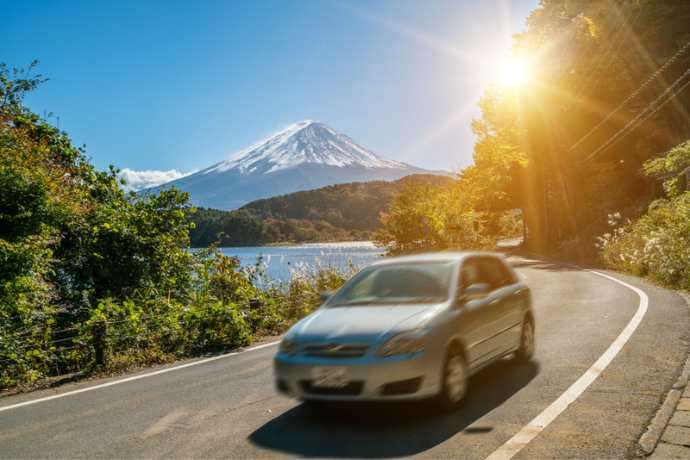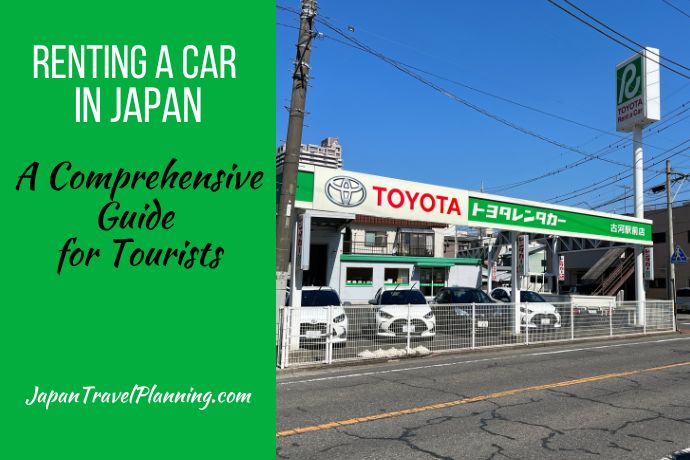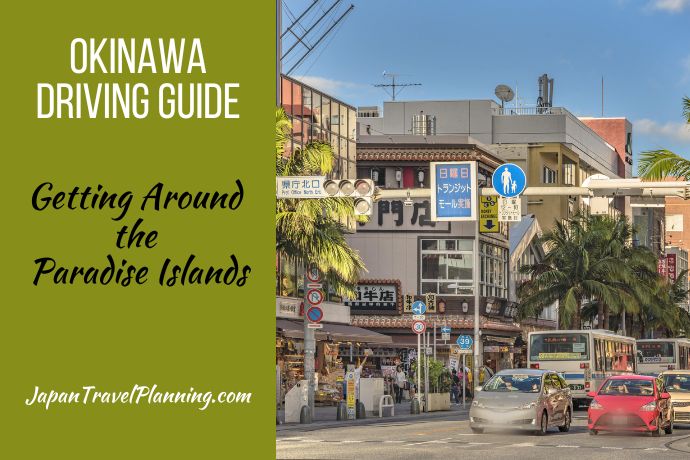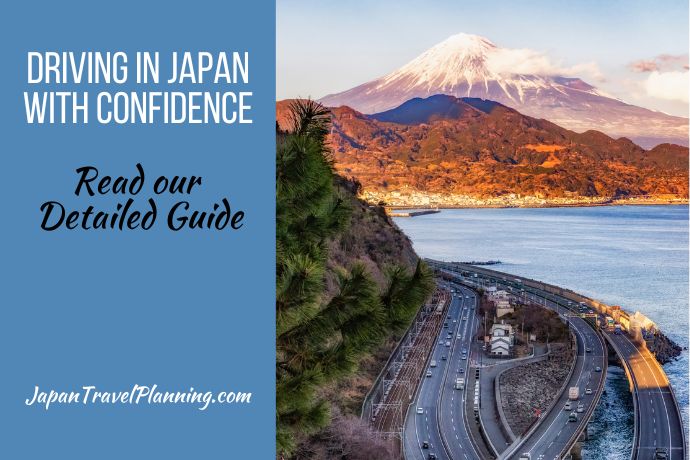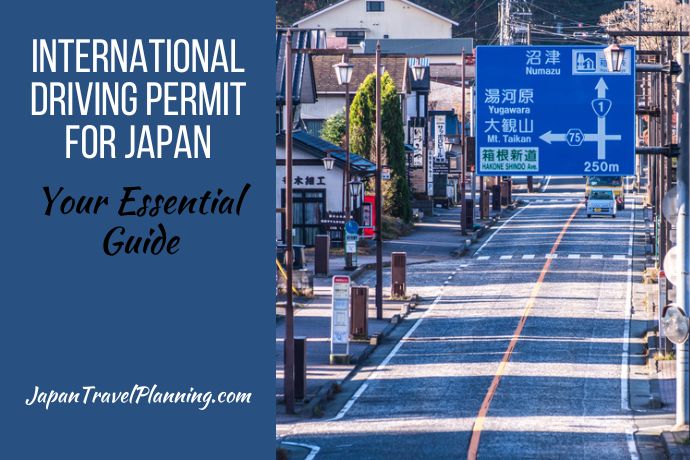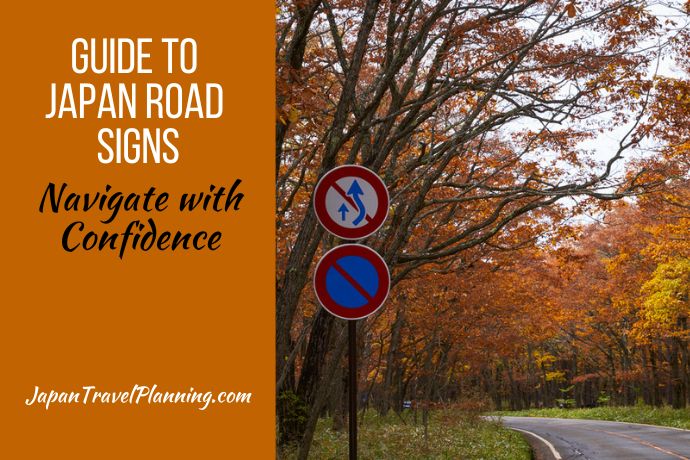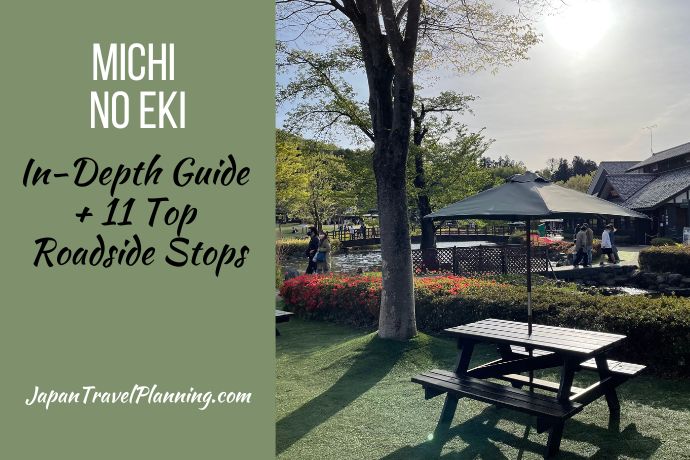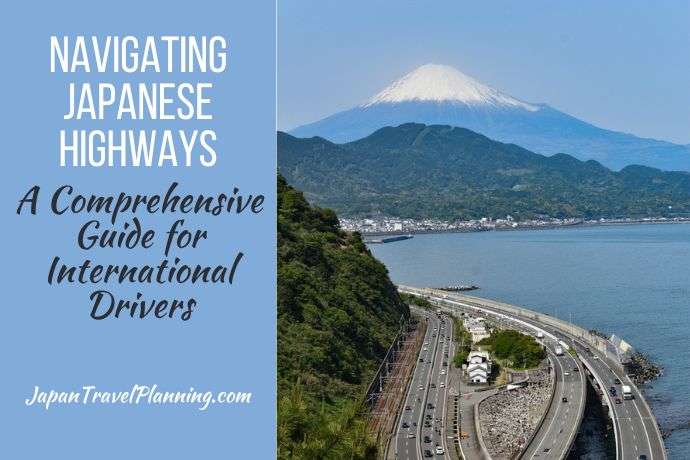Are you about to drive in Japan and are worried about understanding Japanese road signs? When you see them for the first time, Japan road signs can be a puzzle.
Having lived in Japan for many years and driven in various places and conditions, I’ve gathered some insights about road signs and marking that will help you.
This article will guide you through the categories of road signs in Japan, the road signs you’ll come across most often (as a driver and pedestrian), and what they mean, highlight some less common road signs to watch out for and explain the road markings accompanying the signs.
And, if you’re travelling with children? Turn the road signs into a game by spotting/collecting as many as possible, making those drives more engaging for your kids in the back seat.
Disclaimer: This article contains affiliate links. If you book after clicking on one of these links then we may receive a small commission at no extra cost to you.
- Easy comparison of multiple car rental provider options using ToCoo!
- Use coupon code K49O12 to get your 1,000 yen discount
- ToCoo! is a local Japanese car comparison site that has the most options available
- Clear description of included protection and excess
- Good cancellation options
- Child seats, GPS, electronic toll cards, second driver and more are available as add-ons
Japan Road Signs
This article explains the major categories of Japanese road signs, introduces you to the most important signs to be aware of as both a pedestrian and a driver, explains some of the more confusing signs you should know as a driver, and highlights the importance of road markings which work in combination with road signs.
Once you understand how Japan road signs work, they are reasonably easy to interpret independently. However, you may become overwhelmed when too many signs are placed together (which could cause a partial brain meltdown).
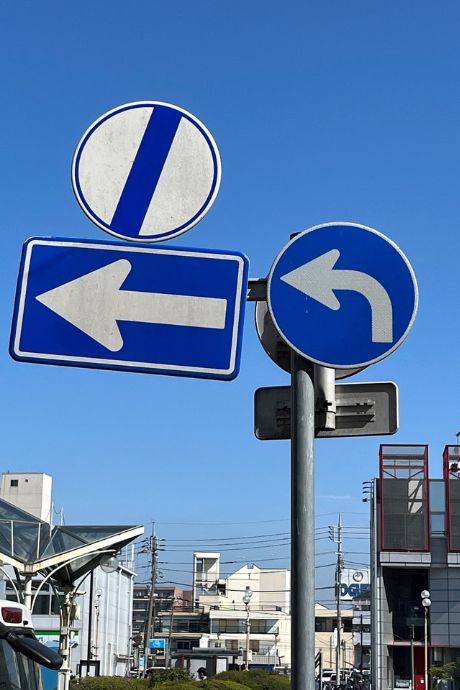
Road Signs in Japan Explained
There are four main types of Japanese driving signs: regulatory, warning, instruction, and guide signs. To support these main types of signs, there is a group of signs called supplemental signs (usually put below the main signs).
Regulatory signs
This group of Japan road signs inform drivers of traffic laws and regulations. Drivers must obey these signs. Let’s take a closer look at the different types of regulatory signs.
- ‘Stop’ and ‘Slow Down’ Signs are triangular and are white with a thick red border.
- Exclusion signs – Examples of this type include roads closed to all vehicles, no buses, no trucks, bicycles only, and weight height and width limits. These signs are circular and are white with thick red borders or blue with thin white edges.
- Turn signs are circular, either blue with thin white borders or white with thick red edges.
- Restriction signs include speed limits, one-way streets, and lane usage signs like bus or bike lanes. These signs are circular and white with thick red borders for speed limit signs. Other restriction signs are blue with white markings/pictograms and are either square or rectangular.
- Parking and stopping signs. No stopping or no parking signs are blue with thick red borders. Blue parking signs with white markings/pictograms (circular or square) indicate the type of parking required, such as parallel or angle parking.
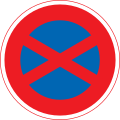
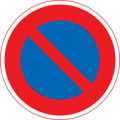
Warning signs
This category of Japanese road signs alerts drivers to dangers ahead. Some examples include T-junction ahead, sharp curves, winding roads, slippery or bumpy roads, traffic merging, steep descents or watching for animals.
Warning signs are diamond shapes with thin black borders and black patterns, symbols and pictograms.
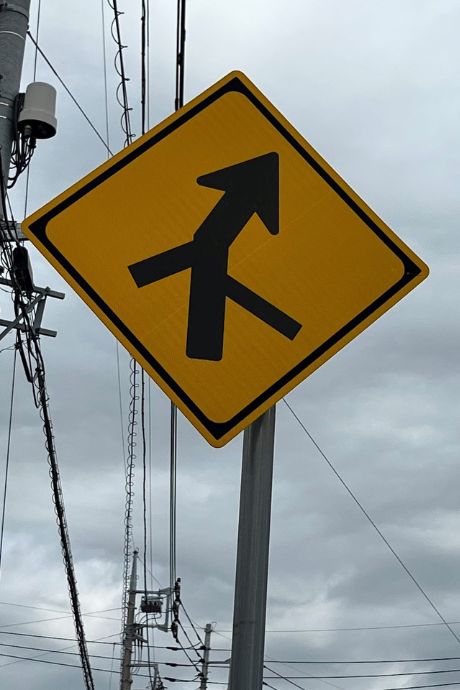
Instruction Signs
Instruction signs are a small category of Japan road signs. They alert drivers about things such as priority roads, parking zones, crosswalks, bike crossings and tram stops.
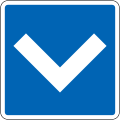
They are blue with thin white borders and white instructions or pictograms. They are generally square.
Guide Signs
Guide signs provide information such as the directions or names of roads. They also inform drivers about the road’s name, number, or distances (such as how far to a town or city).
They come in a variety of shapes. The standard colour for guide signs on expressways is a dark green background with white text.
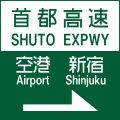
National highways have guide signs with dark blue backgrounds and white text.
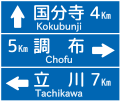
Supplemental Signs
Supplemental signs provide additional information to drivers, such as distances, times, the beginning and end of restrictions, or categories of vehicles.
They are typically put below main signs and have a narrow rectangular shape. Most supplemental signs are white with thin black borders, with black Japanese writing characters, numbers or pictograms.

Extra Tips About Japan Road Signs
Japanese drivers must know the signs in detail (and the written driver’s test checks that they do).
If you are driving as a tourist, realistically, you won’t need to know all the Japan road signs, particularly if you stay outside the major cities where driving is more complicated. Also, most road signs are intuitive and straightforward to understand.
Another point is that it’s quite common to see faded road signs due to weathering. For example, Japanese road signs that were originally blue and red, like the “no parking” and “no stopping”, may have faded over time. Often, all that is left are the diagonal bars across them against a white background.
Key Road Signs Explained
Navigating Japan’s streets, roads, and expressways requires a basic understanding of its road signs. Knowing the essential signs will keep you safe as a driver or pedestrian. Whether you’re driving or walking, here’s what you need to know.
Japanese Stop Sign
The stop sign is the most essential Japanese road sign; ignore it, and you could cause an accident.
The Japanese stop sign looks different from stop signs anywhere else. It is a red triangle with a narrow white rim, with the tip pointing downwards, and the Japanese word for ‘stop’ (止まれ) written across the middle. However, this is not always the case.
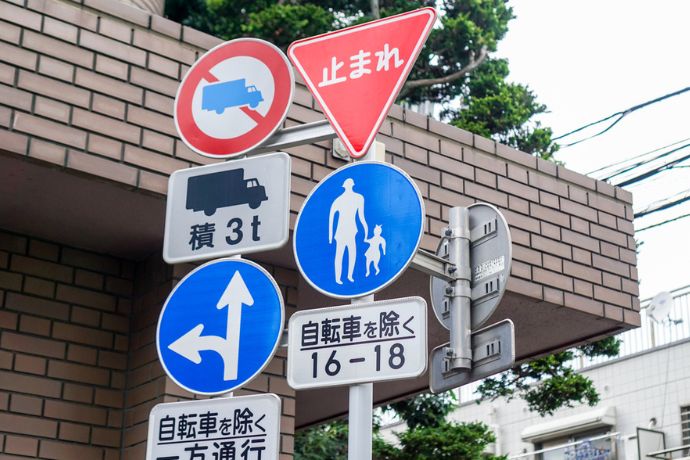
The government decided to modernise the Japan stop signs before the 2020 Tokyo Olympics by adding the word “STOP”.
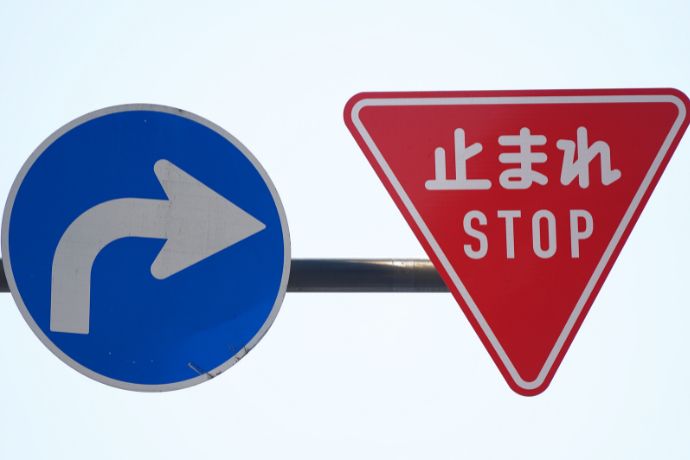
The road signs in Japan are replaced slowly, so it will be a long time before they are entirely phased out, so you may come across stop signs without English. Therefore, remember: The only Japanese road sign, which is a solid red triangle and a thin white border) with the tip pointing down is the Japanese ‘stop’ sign. Whatever the text on it.
Japanese ‘Slow-Down’ Sign
Apart from the Japanese stop sign, there is another Japanese traffic sign with English text on it, which is the sign telling you to slow down.
It’s shaped like a stop sign but is white with a thick red border and blue text. It includes the Japanese characters for ‘slow’ and the English word ‘Slow’.
This sign was also updated in 2017 (before the Olympics), so just like the stop sign, you may see ‘slow down’ signs in Japanese only.
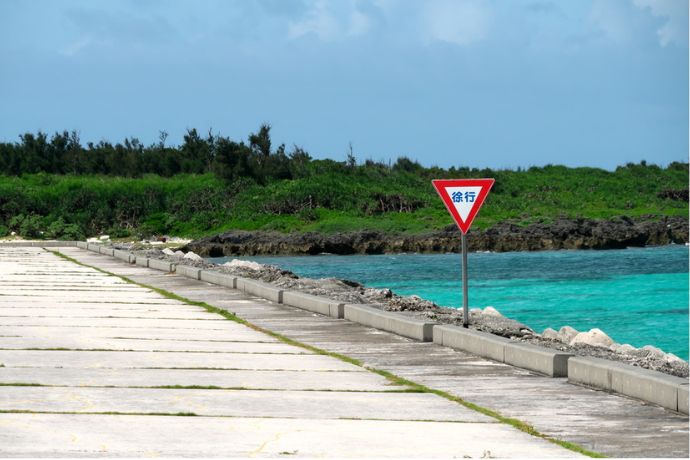
No overtaking
The ‘no crossing centre line to overtake’ sign is another essential Japanese road sign that drivers must be aware of.
Where there is a solid yellow centre line on the road, you are not allowed to pass or overtake other cars – and the “no overtaking” sign is also displayed to support the road markings.
The ‘no overtaking’ sign and the solid yellow line can be seen in the photo below.
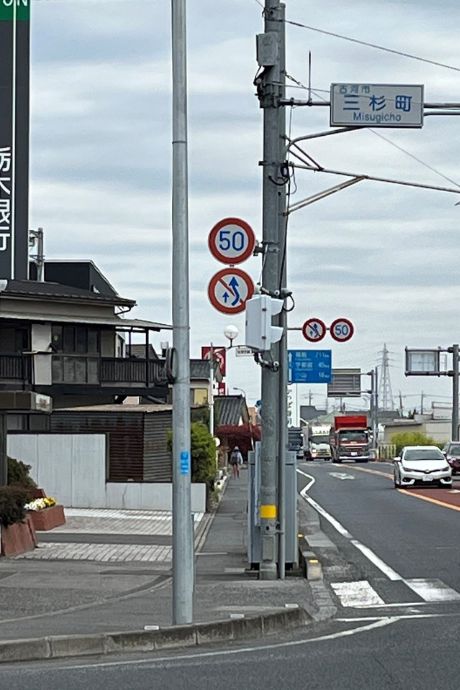
U-turn Signs
‘No U-turn’ is another Japanese road sign you need to be aware of if you want to avoid causing an accident, as well as the turn signs with arrows showing directions. The sign below indicates that U-turns are not permitted.
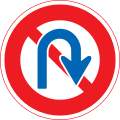
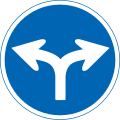
One-way Street and Do Not Enter Signs
Other signs to be aware of are ‘one-way’ street signs and ‘do not enter’ signs. Below are some examples of one-way signs.


A ‘no entry’ sign will be at the other end of a one-way street. The ‘no entry’ sign is a red circle with a white border and a horizontal white bar across the middle.
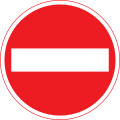
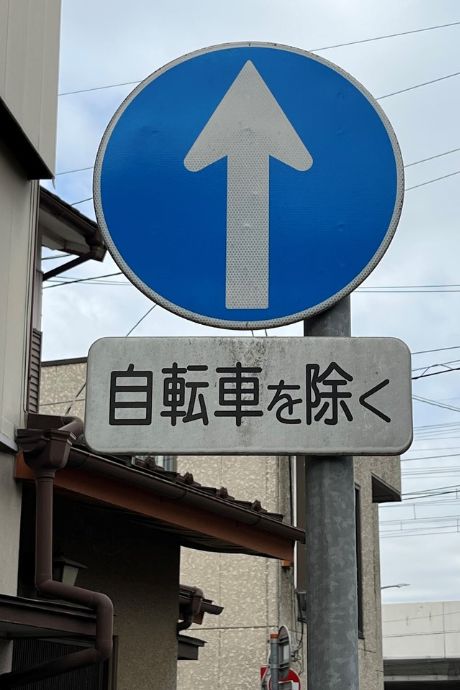
The sign at the top of the image below indicates that buses and trucks cannot enter.

Speed Limit Signs
Speed limit signs are another type of road sign in Japan that you must follow. Some speed limits are strictly enforced, such as the 30 km per hour signs.
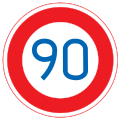
In some situations, there is also an informal rule: ‘Follow the traffic rhythm’. When local people drive 50 kph on a road where the Japanese signage says 40, they will become upset if you precisely follow the speed limit signs.
There is also a small margin of error built into the police enforcement of Japanese speed limits, and local drivers will know this.
You might also come across a supplemental sign related to speed limits. It’s a round white sign with a thin blue border and a thick diagonal blue bar. This sign means ‘end of restriction’. For example, the zone for no overtaking or a 30 km speed limit is ending.

Railroad Crossing Signs
An essential warning sign to follow is the ‘railroad crossing ahead’ sign displayed before a railroad crossing.
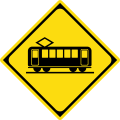
The Japanese rules of the road require drivers of cars at a railroad crossing to stop and confirm safety on the right and left sides, regardless of whether there are barriers at the rail crossing. Turning down the windows to listen for oncoming trains is also advisable.
There is no Japanese stop sign in front of the crossing; the only Japanese road sign is the yellow diamond sign with either a steam locomotive or an electric train.
Pedestrian Road Signs
In Japan, there are a few key signs pedestrians should be particularly aware of: the ‘No pedestrians’ sign and the ‘crosswalk’ sign.
The ‘no pedestrians’ or ‘jaywalking prohibited’ road sign is a square white sign with a thick red border and a thin red diagonal line across an image of a person crossing a street.
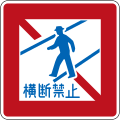
The ‘crosswalk’ sign is a blue square showcasing a white figure of a person walking across a crosswalk. Sometimes, the shape of this sign might be a blue square with the top left and right corners clipped off.
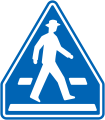
There’s also a variation of the crosswalk sign, which shows two schoolchildren crossing. This sign is not for pedestrians. It’s an extra warning sign for drivers.
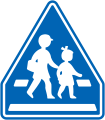
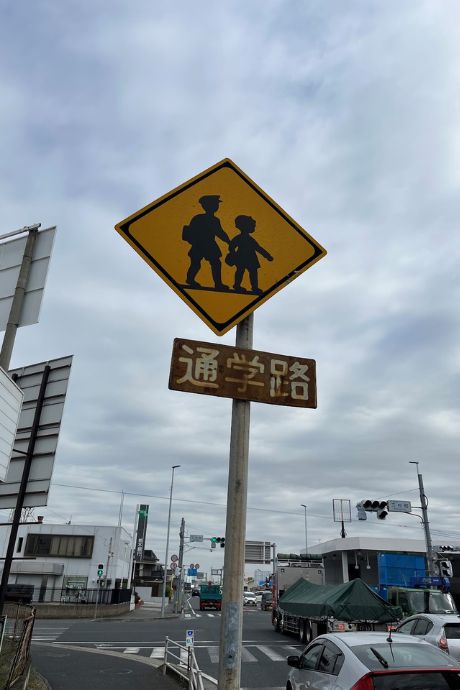
Confusing Japanese Street Signs
The ‘no right turn’ sign looks similar to the ‘no two-step turns for motorcycles, bicycles, and mopeds’ and is easy to mix up. The result is no disaster since both signs mean you should not turn right.
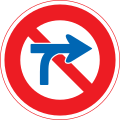
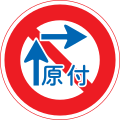
Uncommon Road Signs Worth Noting
Various regulatory, warning and instruction signs are less common. Still, you should be familiar with them if you come across them.
Less Common Warning Signs
There are some warning signs you may only come across a little unless you are in mountainous or rural areas. It pays to watch for these traffic signs so you can adapt to changes on the road ahead of you.
Some warning signs tell you about road conditions, such as sharp curves ahead, steep slopes (up or down), risk of strong side winds, etc.
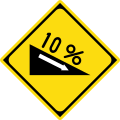
Another group of warning signs relate to watching out for animals such as deer, rabbits and monkeys.
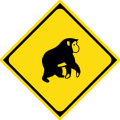
Less Common Regulatory Signs
A regulatory sign to be aware of relates to the use of car horns. You are most likely to come across this sign in the mountains.
The Japanese Road Traffic Law states only to use a traffic horn “in an emergency or in dangerous locations where a horn signal has been installed.” A specific sign requires drivers to use their horns; you might see this sign on curves or tunnels.
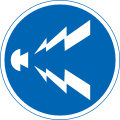
Another sign you will see only sometimes in Japan, even if they’re common in your home country, is the roundabout sign. Traffic lights mainly manage traffic management at intersections in Japan.
Japanese cities, with their narrow roads, can become highly congested. Buses often have a dedicated lane on the left to avoid congested roads as they work to a timetable.
Bus lane signs come in two versions: solid lines on the sides or dashed lines on the sides. Bus lane signs with solid thick lines on the right and left mean a ‘buses only’ lane.

The second version of this sign has dashed or broken lines on the left and right. This sign indicates a ‘buses-priority’ lane.

Sometimes, the bus lane signs have a supplementary sign under them, which means the bus lanes only apply at certain times (as shown on the additional road sign).
A more obscure, but interesting sign is the ‘no non-motorised vehicles (except bicycles)’ sign. Non-motorised, in this case means animal or human-powered vehicles (excluding bikes).
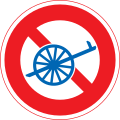
Less Common Instruction Sign
An instruction sign you might come across in a place with trams is a ‘driving on the tram tracks permitted’ road sign.
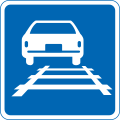
Road Markings to Be Aware Of
Japanese street signs are very small, much smaller than in other countries. But in Japan, the roads make up for it with clear markings.
There will not only be a Japanese stop sign with a stop line. There will also be a huge “止まれ” written in front of the stop line. The road bed where drivers must stop is often painted red – not just in front of stop signs but in front of traffic lights.
The same practice applies to speed limits. Huge roadbed numbers showing the current speed limit support the Japanese speed limit signs.
The use of road marking also applies to other Japanese traffic signs, such as:
- ‘no overtaking’, where a solid yellow line shows that you can not cross the centre line; and
- ‘no U-turn’, where a big ‘U’ with a cross-over the ‘U’ shows that U-turns are forbidden.
There are several other roadbed signs, such as the diamond marks in front of crosswalks and the arrows marking the turn directions of the lanes. Those markings have as much legal weight as the Japanese road signs.
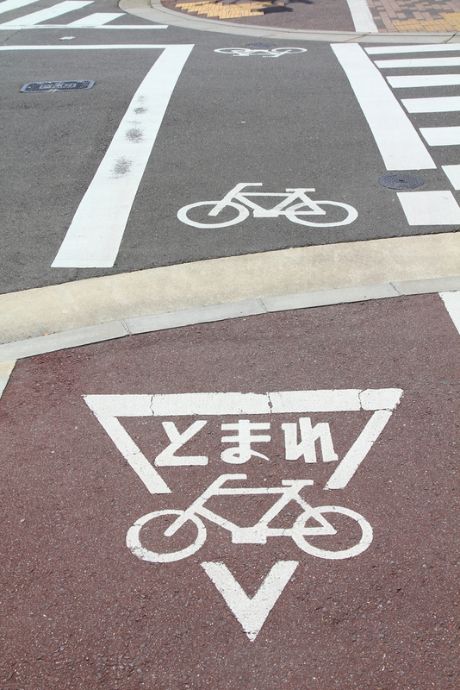
Final Thoughts
Navigating the roads of any foreign country can be a daunting experience, especially when faced with unfamiliar signage.
While you may be unfamiliar with specific Japanese road signs, they are systematic and direct and provide the necessary guidance for drivers and pedestrians.
The main issue you may face (apart from occasional Japanese character-only signs) is that there could be too many signs causing brain overload.
Familiarising yourself with Japan’s road signs before your journey will give you an edge when driving. With time, recognising and understanding these road signs will become second nature.
- Easy comparison of multiple car rental provider options using ToCoo!
- Use coupon code K49O12 to get your 1,000 yen discount
- ToCoo! is a local Japanese car comparison site that has the most options available
- Clear description of included protection and excess
- Good cancellation options
- Child seats, GPS, electronic toll cards, second driver and more are available as add-ons
Frequently Asked Questions about Japanese Road Signs
Driving in Japan? Here are the most frequently asked questions about Japan road signs to ensure a smooth journey.
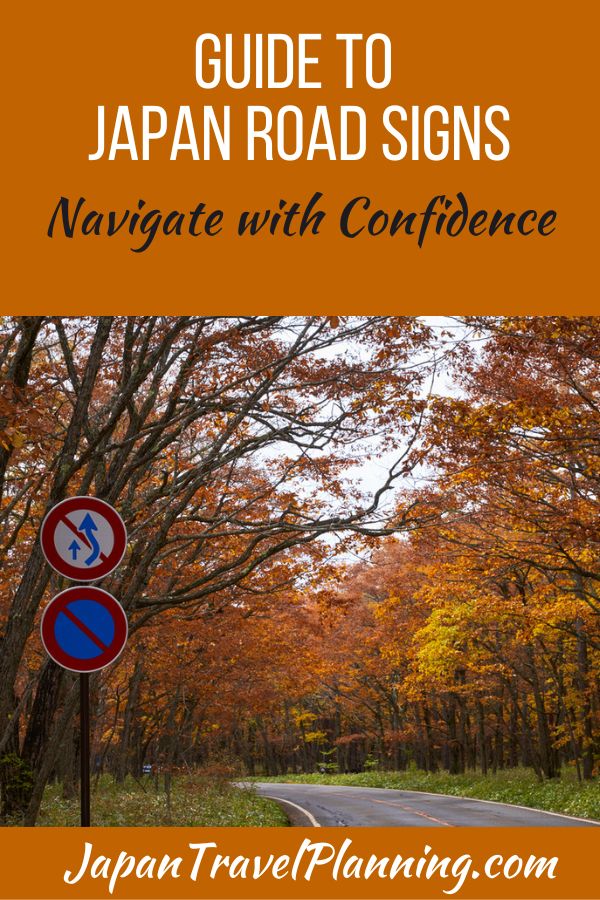
You may also like:
Renting a Car In Japan: A Comprehensive Guide for Tourists
Renting a Car in Okinawa: Explore Japan’s Paradise
Driving in Okinawa Guide: Getting Around the Paradise Islands
Driving in Japan with Confidence: Read our Detailed Guide
International Driving Permit for Japan: Your Essential Guide
Japan Traffic Lights Guide: More Than Red, Yellow, and Green
Guide to Japan Road Signs: Navigate with Confidence
Michi no Eki: In-Depth Guide + 11 Top Roadside Stops
Navigating Japanese Highways: A Comprehensive Guide for International Drivers
Join the Japan Travel Planning Facebook Group or Discord Server
You are also welcome to join our Japan Travel Planning Facebook Group and our Japan Travel Planning Discord Server – they are great resources to enable you to ask questions about your upcoming trip to Japan!
Disclaimer: This article contains affiliate links. If you book after clicking on one of these links then we may receive a small commission at no extra cost to you.

